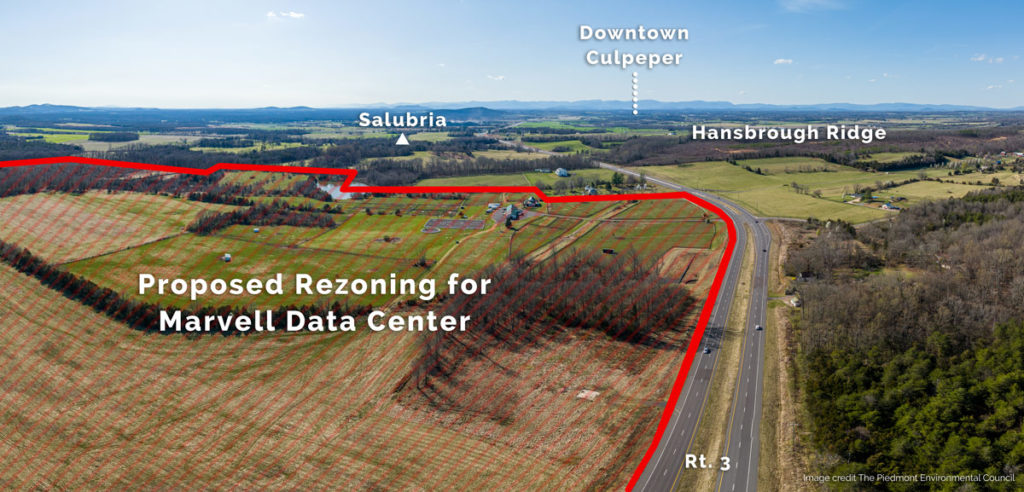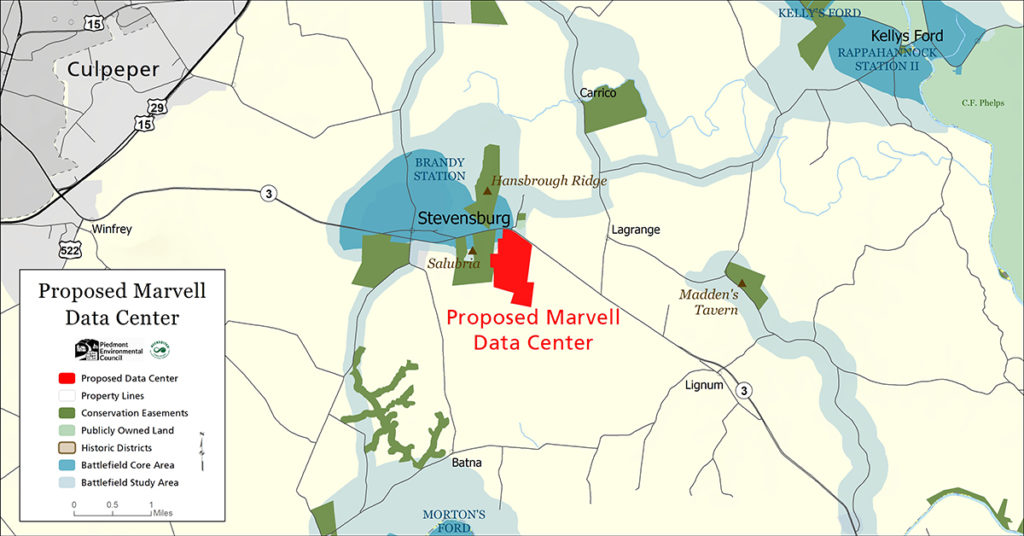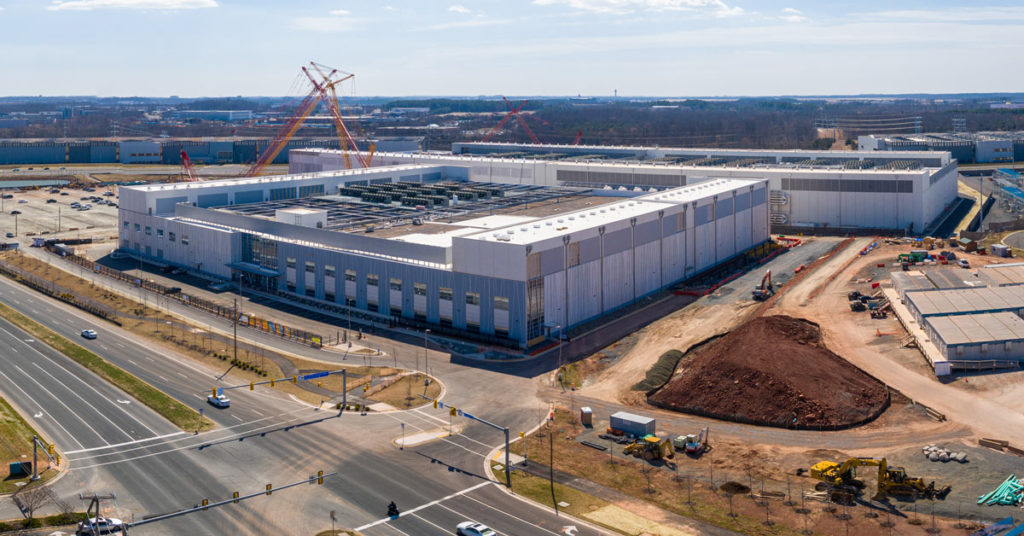This text was taken from email alerts sent out on March 8th and 24th, 2022. Sign up for email alerts >>
Urge the Board of Supervisors to Vote “No” on April 5
On April 5, the Board of Supervisors will consider a rezoning request to convert 250 acres of agricultural land to light industrial for a 427,000 square foot data center and accompanying transmission line infrastructure.
At its March 9 meeting, the Planning Commission voted 5-4 to recommend denial of this application. While their vote was an important step, the Board of Supervisors could still decide to approve it.
Now it’s more important than ever that supervisors hear from their constituents about the impacts this industrial rezoning would have on a uniquely historic and scenic rural area of Culpeper. Urge the Board to do the right thing and encourage Amazon to seek a location in the County that is already industrially-zoned for data centers.

Two ways to learn more and share your concerns
1. Contact the Board of Supervisors
The Board’s vote on April 5 is expected to be extremely close. In order to defeat this proposal and preserve this historic landscape, it is critical that supervisors hear from concerned constituents. We’ve set up an advocacy campaign to make it easy to email the Board directly.
2. Speak at the public hearing on April 5
At their April 5 meeting, prior to voting on this rezoning application, the Board of Supervisors will hold a public hearing. This is the final opportunity to speak directly to the supervisors before they cast their votes, and it is important that the overwhelming message they hear from Culpeper residents that evening is that this is the wrong location for this facility. The Board’s April 5 meeting will begin at 7 p.m. and will be held at the County Administration Building (302 N. Main Street, Culpeper, VA 22701).
Board of Supervisors Public Hearing
Tuesday, April 5 at 7:00 p.m.
302 N. Main Street, Culpeper, VA 22701
More information about the proposal

PEC is concerned about several aspects of this proposed project and believes that Culpeper County should not approve this rezoning request. We hope that you, as a Culpeper resident, will attend the public hearing on April 5th to voice opposition to this proposal. In the event you cannot attend, we encourage you to directly contact members of Culpeper’s Planning Commission and Board of Supervisors to express your concerns.

Why this project should be denied
Some of the primary reasons why PEC is opposed to this proposed development include:
- Adverse impacts to historic and scenic resources: The proposed data center would be located directly adjacent to Salubria, which holds an 18th-century manor house listed on the National Register of Historic Places. It would also be directly across Route 3 from Hansbrough Ridge, an important site on the Brandy Station Battlefield that is likely to be incorporated into the Culpeper Battlefields State Park recently approved by the Virginia General Assembly.
The numerous historic sites close to the project area contribute meaningfully to Culpeper’s sense of place and heritage tourism economy. A huge 45-foot high modern data center complex sprawling over 427,000 square feet would significantly alter the experience that visitors and residents have in that historic landscape (not to mention the additional visual impact of the associated six-acre substation and accompanying transmission line infrastructure). This project would also further industrialize the Route 3 corridor, which (for now) acts as a welcoming, largely rural gateway into Culpeper.
- Spot rezoning of agricultural land: The parcels in question are currently zoned for agricultural use and require a rezoning to light industrial to accommodate the proposed data center complex. “Spot zoning” generally refers to singling out a property and zoning it for a type of land use that is significantly different than surrounding parcels. Far too often, developers benefit from a spot rezoning of agricultural land to industrial use at the expense of the community’s shared vision for a particular area.
Regardless of whether a data center ever gets built, this rezoning would allow a host of other high-impact, pollution-intensive uses that could have additional impacts. Sufficient industrially-zoned land that could accommodate this project already exists in more appropriate areas of the County.
- Incompatibility with the County’s comprehensive plan: The County’s future land use map designates this area along Route 3 as agricultural and open space, reflective of a stated goal of the Culpeper County Comprehensive Plan to “maintain the rural character of Culpeper County.” The Comprehensive Plan further states that commercial development should be encouraged “within designated village centers where it can be economically and conveniently served by public facilities” so as to “limit the extension of infrastructure improvements into agricultural and natural resource areas.”
Culpeper County has already designated five technology corridors, including four in the Stevensburg Magisterial District, encompassing nearly 3,000 acres specifically to attract data centers and other similar businesses, yet this project lies outside those designated areas.
- Further analysis needed: At present, numerous unanswered questions deserve further study before any formal action. What infrastructure improvements will be necessary to construct and operate this data center complex (e.g. new transmission lines)? What will the impact to the area’s groundwater supply be? What visual impacts would this proposal have on the surrounding area? A more comprehensive viewshed analysis than what was included in the applicant’s submittal is necessary. County officials should request clarification and additional information from the applicant on several fronts before taking any action on this rezoning request.
